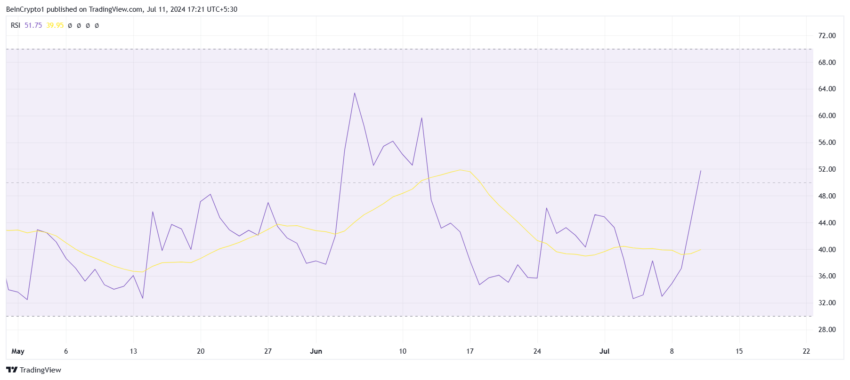Recently, the price of Stacks has skyrocketed, reaching a peak that hasn’t been seen in a week or more. Because of this increase, Stack’s Relative Strength Index (RSI) has entered positive territory for the first time in a month. This shows that there is more push to buy.
RSI is a technical indicator that shows how significant recent price changes have been. It indicates that the current buying of Stack is excessive. Most people see this as a positive sign that prices will go up at this point.
Stacks RSI Shows Buyer Interest
The fact that the RSI is rising indicates that buyers are becoming more interested and hopeful. The RSI can help prices keep going up, which makes more people want to buy. Stack’s funding rate has dropped sharply and is now negative, which makes people less sure of themselves.

The funding rate, which shows how much it costs to keep a position in a futures contract, usually indicates how many long positions there are and how many short positions there are. If the funding rate is negative, it means that short-term contracts are taking over the market.

The sharp drop in the funding rate shows that market players are becoming more pessimistic. This happens when traders think the price of STX will go down and open short trades to make money from the expected trend. The price could go down because of this negative mood could cause the price to drop, which would go against the bullish signs from the RSI.
The market for STX is currently sending mixed signals, with investors leaning both up and down. Even with these mixed signs, the price of STX rose sharply by 19% in the last 24 hours, bringing the altcoin to $1.66. During this rebound, Stacks rose above the support floor at $1.24 and tried to reach $1.80.

Break through the $1.80 ceiling, though, as most investors are still bearish. It might be harder for the altcoin to try to go up now. Prices are likely to remain between $1.80 and $1.53, which have served as levels of support and resistance.







